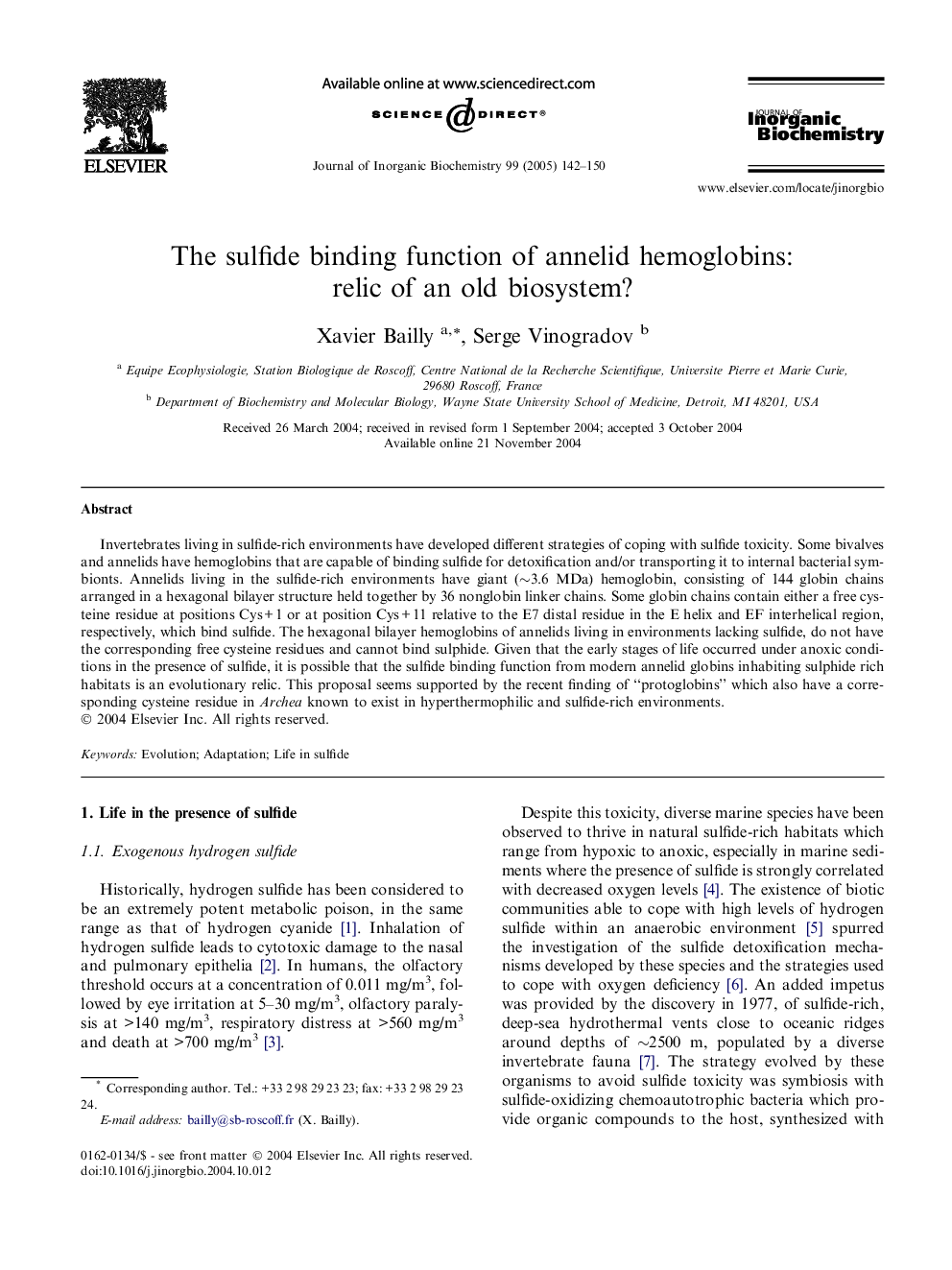| Article ID | Journal | Published Year | Pages | File Type |
|---|---|---|---|---|
| 10574016 | Journal of Inorganic Biochemistry | 2005 | 9 Pages |
Abstract
Invertebrates living in sulfide-rich environments have developed different strategies of coping with sulfide toxicity. Some bivalves and annelids have hemoglobins that are capable of binding sulfide for detoxification and/or transporting it to internal bacterial symbionts. Annelids living in the sulfide-rich environments have giant (â¼3.6 MDa) hemoglobin, consisting of 144 globin chains arranged in a hexagonal bilayer structure held together by 36 nonglobin linker chains. Some globin chains contain either a free cysteine residue at positions Cys + 1 or at position Cys + 11 relative to the E7 distal residue in the E helix and EF interhelical region, respectively, which bind sulfide. The hexagonal bilayer hemoglobins of annelids living in environments lacking sulfide, do not have the corresponding free cysteine residues and cannot bind sulphide. Given that the early stages of life occurred under anoxic conditions in the presence of sulfide, it is possible that the sulfide binding function from modern annelid globins inhabiting sulphide rich habitats is an evolutionary relic. This proposal seems supported by the recent finding of “protoglobins” which also have a corresponding cysteine residue in Archea known to exist in hyperthermophilic and sulfide-rich environments.
Keywords
Related Topics
Physical Sciences and Engineering
Chemistry
Inorganic Chemistry
Authors
Xavier Bailly, Serge Vinogradov,
